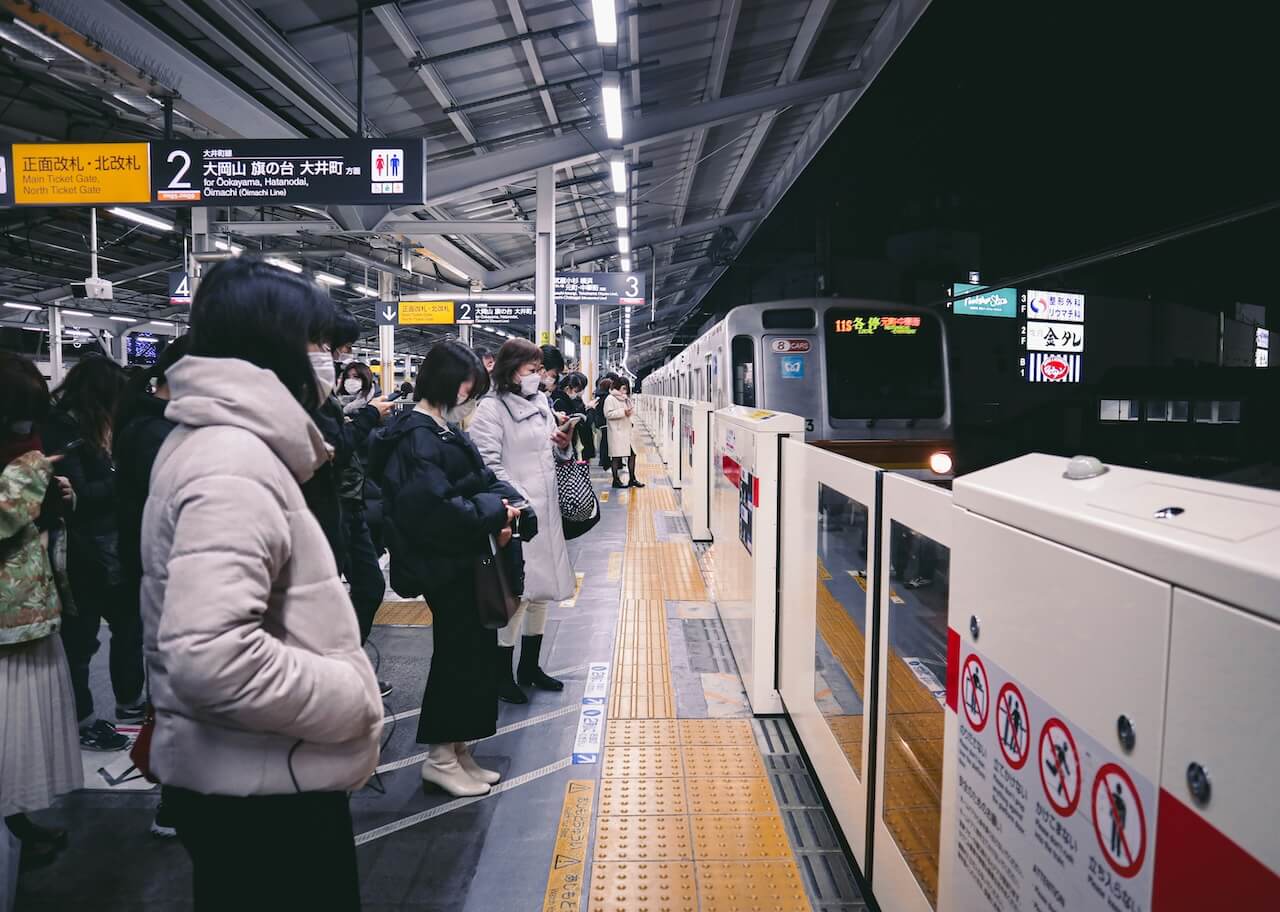Rail travel in Japan isn’t just another way to get from A to B—it’s an adventure all of its own!
Thanks to an incredible variety of JR regional passes, you can travel to places that most tourists have never even heard of. Imagine snowboarding through the epic Japanese Alps (where walls of snow rise up to 17 meters high in winter!), riding an iconic Japanese bullet train, or even getting lost in the charming Edo-style streets of Takayama.
But with so many options to choose from, which routes are actually worth it? In this guide, we highlight the four best routes to take you off the beaten path and straight to Japan’s most unique wonders.
JR East-South Hokkaido Route
For a taste of Japan’s nature and a winter wonderland-like atmosphere, look no further than northern Japan. Starting south of Tokyo and stretching all the way to Sapporo, this route is best explored with a JR East-South Hokkaido Pass, which gives you six full days to hop on and off the trains at your own pace.
Be sure to add Sendai to your itinerary, which is widely considered to be one of Japan’s most beautiful cities. Also known as the ‘City of Trees’, Sendai has an abundance of greenery and tree-lined avenues that change with each season. Jozen-dori Street is especially a must, as the iconic cedar trees give the city a cozy charm every season.
Further north, Sapporo draws visitors each February with its Snow Festival, where hand-carved ice sculptures transform the city into a cool winter destination. For those craving outdoor adventure, nearby ski resorts like Teine and Kiroro offer perfect slopes for skiing and snowboarding.
JR Kyushu Rail Route
Not a fan of winter? If you shivered while reading the section above, no worries—you can swap Japan’s snowy peaks for sunny Kyushu! The Kyushu Rail Pass gives you access to travel around Japan’s third-largest island, including its famous hot springs and nine volcanoes.
Many journeys begin in Fukuoka, Kyushu’s largest city, where temples, sanctuaries, and the historic Gion district bring Kyushu’s heritage to life.
From there, make your way to Kumamoto to see the beautiful Kumamoto Castle, and don’t miss Aso Volcano (one of the world’s largest calderas) while you’re there. You can take a local or limited express train to this geological wonder.
Speaking of natural wonders, if you’re craving a classic Japanese onsen experience, Beppu is a must. Known for its steamy mountain hot springs, Beppu also offers unique spa treatments like warm sand baths and mineral-rich mud baths—perfect for relaxing after your adventures in Japan!
Tateyama Kurobe Alpine Route
If you like offbeat adventures, the Tateyama Kurobe Alpine Route should be at the top of your list. Winding through the rugged Hida, Kiso, and Akaishi mountains—better known as the Japanese Alps—this route is full of jaw-dropping mountain views and wild landscapes.
Although you’ll arrive at Tateyama city via the Toyama Chih? Railway, this 90-kilometer (56-mile) alpine route?? is a multi-step trip that takes you across the mountains by cable car, bus, and funicular. That’s not all: the route climbs an impressive 2,400 meters (7,874 feet) in elevation as it crosses from Toyama Prefecture to Nagano Prefecture. No wonder it’s also nicknamed ‘The Roof of Japan’!
After your trip, consider visiting Matsumoto, home to the iconic Matsumoto Castle (one of Japan’s few remaining original castles) or head to Takayama, a charming mountain town known for its Edo-period wooden houses.
Shikoku Pilgrimage Route
You’ve probably heard of famous pilgrimage routes such as Camino de Santiago in Spain or Via Francigena in Italy… but did you know that Japan also has its own pilgrimage route?
The Shikoku Pilgrimage is unique in that it winds through 88 Buddhist temples scattered across the island of Shikoku and typically takes from 30 to 60 days to complete. Completing the entire 1,200 km (746 mi) route on foot is a bit of a challenge, but there’s an easier way— with a JR Pass!
One advantage of this pass is that you can visit the island’s most beautiful places and enjoy amazing views—all from the comfort of the train wagon. Here are three cities on Shikoku island that are well worth a visit:
Matsuyama is likely your first stop, being the island’s largest city. Known for Dogo Onsen, Japan’s oldest hot spring, Matsuyama is a great choice to combine history and relaxation in one destination.
Meanwhile, Takamatsu is celebrated for Ritsurin Koen, one of Japan’s largest and most beautiful gardens. Dating back to the 17th century, the garden is known for its ponds, islands, and scenic mountain views.
Finally, Kochi is renowned for its 300-year-old Sunday market, which stretches along the city’s central streets. While you’re here, don’t miss Kochi Castle, an impressive 400-year-old landmark full of history and character.
Each of these routes offers a unique combination of natural beauty, cultural depth, and historical significance, allowing you to experience Japan far beyond its bustling cities. So, whether you’re a winter enthusiast, a history buff, or simply in search of tranquility, a JR pass is your ticket to uncovering the hidden wonders of Japan—one train ride at a time.
